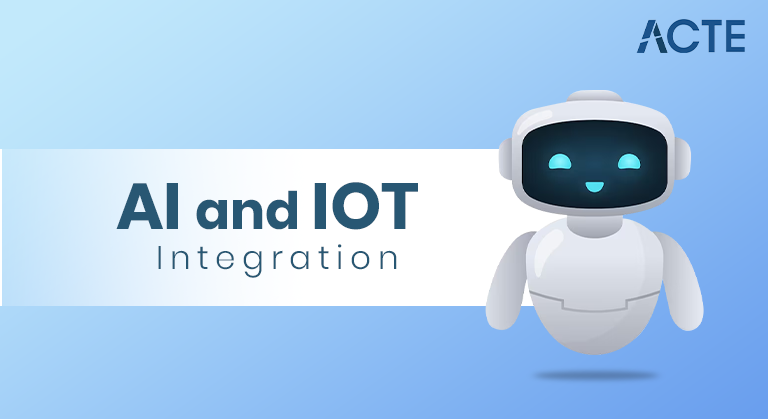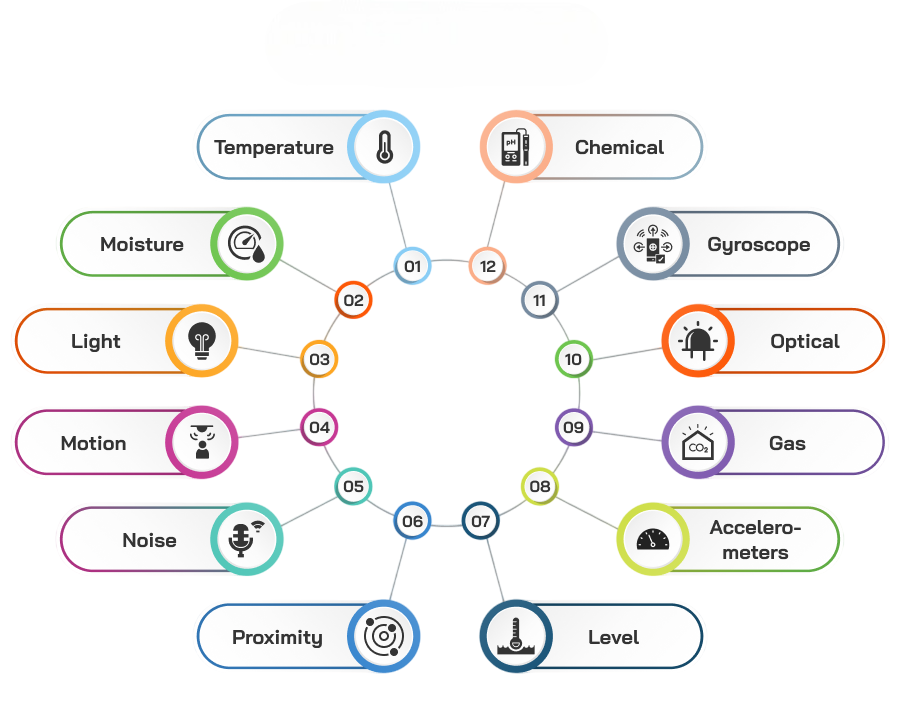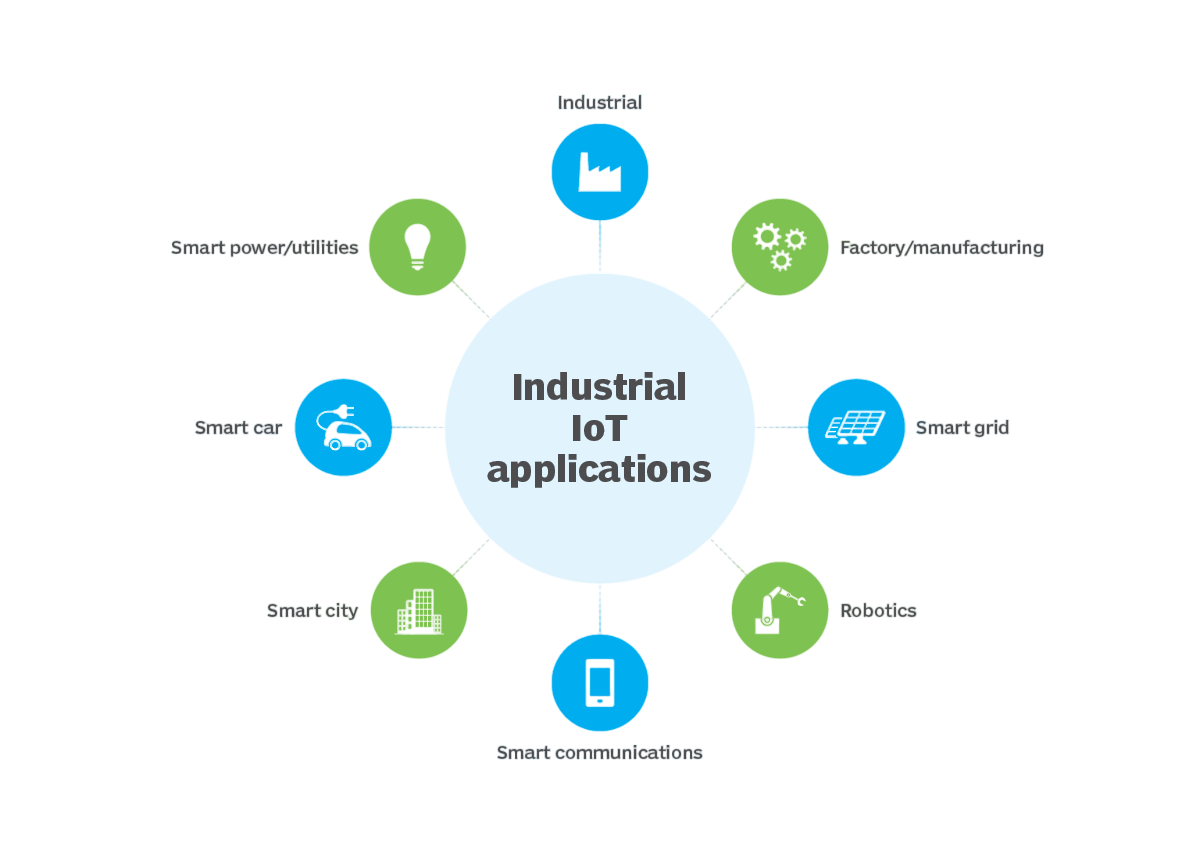
- Introduction to AI and IoT
- Role of Sensors and Devices
- Real-Time Data Collection
- AI-Based Decision Making
- Predictive Maintenance
- Smart Cities and Homes
- Industrial IoT Applications
- Healthcare Use Cases
- Conclusion
Introduction to AI and IoT
Artificial Intelligence (AI) and the Internet of Things (IoT) are two groundbreaking technologies that are revolutionizing the digital landscape. While IoT focuses on connecting physical devices and collecting real-time data from them, AI brings in the power of intelligent decision-making by analyzing and interpreting that data. Together, AI and IoT form a synergistic relationship known as AIoT (Artificial Intelligence of Things). This combination enables smarter automation, enhanced operational efficiency, and the capability to predict outcomes and make intelligent decisions without human intervention. From smart homes Artificial Intelligence Trainingand industrial automation to healthcare and urban planning, AI and IoT are reshaping how devices interact with the environment and each other. Artificial Intelligence (AI) and the Internet of Things (IoT) are two transformative technologies reshaping industries and daily life. AI enables machines to learn, reason, and make decisions, while IoT connects physical devices to the internet, allowing them to collect and exchange data. When combined, AI and IoT create intelligent systems that can analyze real-time data, automate processes, and improve decision-making. Applications range from smart homes and healthcare monitoring to industrial automation and predictive maintenance. This synergy enhances efficiency, reduces human intervention, and opens new possibilities for innovation across sectors, making AI and IoT central to the future of technology.
Role of Sensors and Devices
- Data Collection: Sensors gather real-time data such as temperature, motion, humidity, pressure, and location.
- Device Communication: Devices transmit collected data to cloud or edge systems via Wi-Fi, Bluetooth, Zigbee, or cellular networks.
- Monitoring & Control: Enable continuous monitoring and remote control of systems (e.g., smart homes, healthcare devices) What is Artificial Intelligence .
- Automation: Support automated decision-making (e.g., turning off lights when no motion is detected).
- Integration with AI: Provide the raw data that AI systems use for analysis, prediction, and optimization.
- Improved Efficiency: Enhance performance and reduce human error in industrial, agricultural, and consumer applications.

Do You Want to Learn More About Artificial Intelligence ? Get Info From Our Artificial Intelligence Course Training Today!
Real-Time Data Collection
- Instant Data Capture: Gathers data continuously or at high frequency from sensors, devices, or applications.
- Low Latency Processing: Enables immediate analysis and response, crucial for time-sensitive applications.
- Supports Automation: Triggers actions in real-time (e.g., alerts, system adjustments) without human intervention.
- Improves Decision-Making: Provides up-to-date insights for faster, more accurate business or operational decisions Artificial Intelligence Training.
- Used in Various Domains: Common in smart cities, healthcare monitoring, autonomous vehicles, and industrial systems.
- Integration with Cloud & Edge: Data can be processed locally (edge) or sent to the cloud for deeper analytics.
- Connected Infrastructure: Use IoT devices and sensors to monitor traffic, lighting, waste management, and energy use.
- Energy Efficiency: Smart homes optimize heating, cooling, and lighting to reduce energy consumption and costs.
- Enhanced Safety: Surveillance cameras, smart locks, and emergency systems improve security in homes and public spaces How to Build a Career in AI and Machine Learning.
- Improved Transportation: Real-time traffic data helps reduce congestion and supports smart public transit.
- Better Resource Management: Automated water and waste systems promote sustainability and reduce waste.
- Convenience & Comfort: Voice assistants, smart appliances, and automated controls improve daily living experiences.
- Predictive Maintenance: Sensors monitor equipment health to predict failures and schedule timely repairs, reducing downtime.
- Asset Tracking: Real-time tracking of machinery, tools, and inventory improves operational efficiency.
- Process Automation: Connected devices automate manufacturing processes, enhancing speed and accuracy.
- Quality Control: IoT devices collect data to monitor product quality and detect defects early.
- Energy Management: Role of Artificial Intelligence Smart meters and sensors optimize energy consumption, lowering costs and environmental impact.
- Safety Monitoring: Wearable IoT devices track worker health and hazardous conditions to improve workplace safety.
- Supply Chain Optimization: Real-time data streamlines logistics and inventory management.
Would You Like to Know More About Artificial Intelligence ? Sign Up For Our Artificial Intelligence Course Training Now!
AI-Based Decision Making
AI plays a critical role in enabling devices and systems to make autonomous decisions. Machine learning models can be trained on historical data to recognize normal and abnormal patterns. When new data arrives, the model can determine whether any action is required. For example, in a smart thermostat, AI can learn user behavior patterns and adjust temperature settings automatically to optimize energy consumption. In logistics, AI can determine the most efficient delivery routes in real time by analyzing traffic and weather data. These decision-making capabilities are essential in building truly smart and adaptive IoT solutions Artificial Intelligence for Beginners . AI-based decision making refers to the use of artificial intelligence technologies to analyze data, identify patterns, and make informed decisions without constant human input. By leveraging machine learning, deep learning, and natural language processing, AI systems can process vast amounts of structured and unstructured data in real time. This enables faster, more accurate, and often predictive decision-making across various domains, including finance, healthcare, manufacturing, deep learning and transportation. AI-based systems can continuously learn from new data, adapt to changing environments, and optimize outcomes. As a result, businesses and organizations can enhance efficiency, reduce errors, and make smarter, data-driven decisions.
Predictive Maintenance
Predictive maintenance is one of the most impactful use cases of AI in IoT. Traditional maintenance methods are either reactive or scheduled, often leading to unexpected failures or unnecessary costs. AI enables predictive maintenance by analyzing sensor data from equipment to forecast potential failures before they occur. Techniques like anomaly detection, regression models, and deep learning are employed to identify early warning signs. This allows maintenance teams to take preemptive actions, reducing downtime, extending equipment life, and saving operational costs. Industries such as manufacturing, energy, and transportation heavily rely on this AI-driven capability. ChatGPT said: Predictive maintenance uses data analysis, machine learning, and IoT sensors to predict when equipment or machinery is likely to fail A* Algorithm in AI . Instead of following fixed schedules or waiting for breakdowns, it monitors the condition and performance of assets in real time. By analyzing patterns and anomalies in data, predictive maintenance helps identify early signs of wear or malfunction. This approach reduces unexpected downtime, lowers maintenance costs, and extends the lifespan of equipment. Widely used in industries like manufacturing, transportation, and energy, predictive maintenance improves operational efficiency and safety by enabling timely, data-driven maintenance actions before failures occur.
Gain Your Master’s Certification in Data Science Training by Enrolling in Our Artificial Intelligence Master Program Training Course Now!
Smart Cities and Homes
Preparing for Artificial Intelligence Job? Have a Look at Our Blog on Artificial Intelligence Interview Questions & Answer To Ace Your Interview!
Industrial IoT Applications

Healthcare Use Cases
AI and IoT have transformative potential in the healthcare industry. IoT devices such as wearable fitness trackers, smartwatches, and medical sensors collect patient data continuously. AI analyzes this data to detect health anomalies, monitor chronic conditions, and provide personalized health recommendations. For instance, AI can detect irregular heart rhythms from wearable ECG monitors and alert healthcare providers. Smart hospital beds equipped with sensors monitor patient movement, vital signs, and even bed occupancy. AI-based diagnostics tools use medical imaging data to identify diseases such as cancer Advantages and Disadvantages of Artificial Intelligence or pneumonia with high accuracy, thus enhancing patient care and reducing the burden on medical professionals. Healthcare leverages IoT and AI to improve patient care, enhance operational efficiency, and enable remote monitoring. Wearable devices track vital signs like heart rate and blood pressure in real time, allowing early detection of health issues. Smart sensors monitor medication adherence and chronic conditions, reducing hospital visits. AI analyzes medical images and patient data to assist in diagnosis and personalized treatment plans. IoT-enabled equipment improves asset management and sterilization processes in hospitals. Together, these technologies support telemedicine, emergency response, and predictive analytics, ultimately enhancing patient outcomes, reducing costs, and making healthcare more accessible and proactive.
Conclusion
AI and IoT are powerful technologies that, when combined, create intelligent systems capable of transforming industries and improving lives. From real-time monitoring and predictive maintenance to personalized healthcare and smart cities, AI enhances the value derived from Industrial IoT Applications. While challenges remain in terms of data security, scalability, deep learning and interoperability, ongoing innovations Artificial Intelligence Training in AI algorithms and hardware are paving the way for more robust and responsive IoT systems. As the world becomes increasingly data-driven, the integration of AI into IoT will be key to unlocking new efficiencies, insights, and experiences. Organizations and individuals that invest in AIoT will be better equipped to thrive in the digital future.


